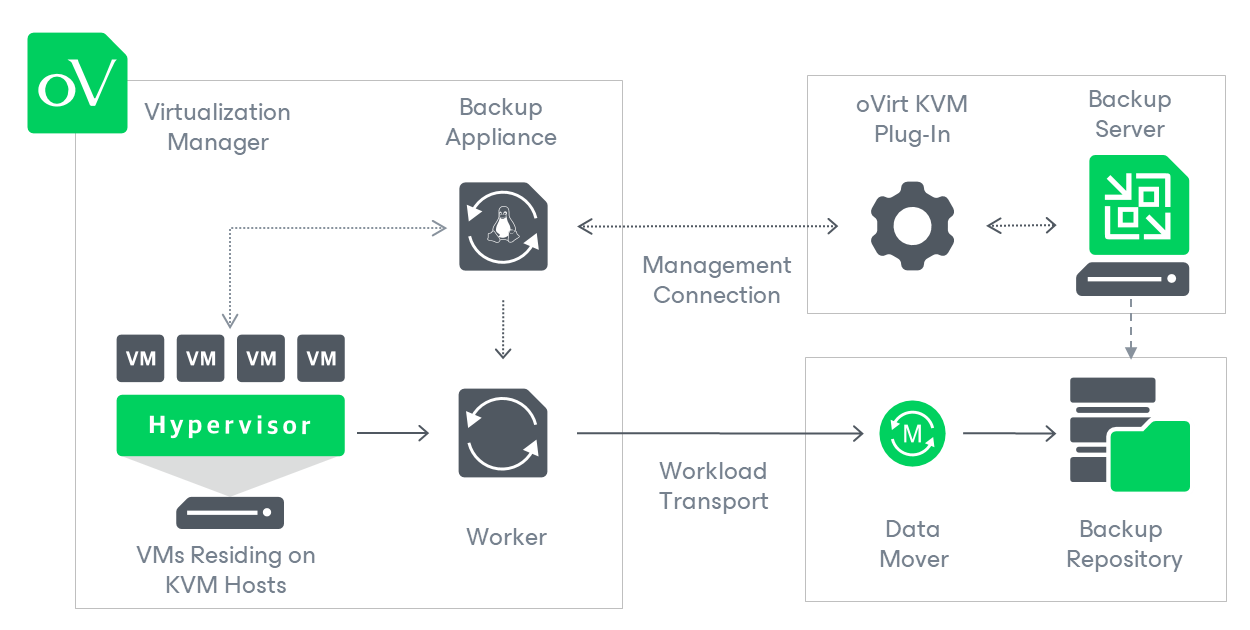Solution Architecture
Since Veeam Plug-in for OLVM and RHV is integrated with Veeam Backup & Replication, the solution architecture comprises the following set of components:
The oVirt KVM Manager is a Linux-based physical or virtual machine that manages oVirt resources such as VMs, hosts, clusters, storage domains and networks. Veeam Plug-in for OLVM and RHV uses the oVirt KVM Manager to access oVirt resources while performing backup and restore operations.
The backup server is a Windows-based physical or virtual machine on which Veeam Backup & Replication is installed. The backup server is the configuration, administration and management core of the backup infrastructure. It coordinates backup and restore operations, controls job scheduling and manages resource allocation.
Veeam Plug-in for oVirt KVM is an architecture component that enables integration between the backup server and other components of the backup infrastructure. Veeam Plug-in for oVirt KVM also allows the backup server to deploy and manage the workers.
A backup repository is a storage location where Veeam Plug-in for OLVM and RHV stores backups of protected oVirt VMs.
To communicate with backup repositories, Veeam Plug-in for OLVM and RHV uses Veeam Data Mover — the service that is responsible for data processing and transfer. By default, Veeam Data Mover runs on the repositories themselves. If a repository cannot host Veeam Data Mover, it starts on a gateway server — a dedicated component that “bridges” the backup server and workers. For more information, see the Veeam Backup & Replication User Guide, section Gateway Server.
A worker is an auxiliary Linux-based VM that resides in the cluster and processes backup workloads when transferring data to and from backup repositories.
